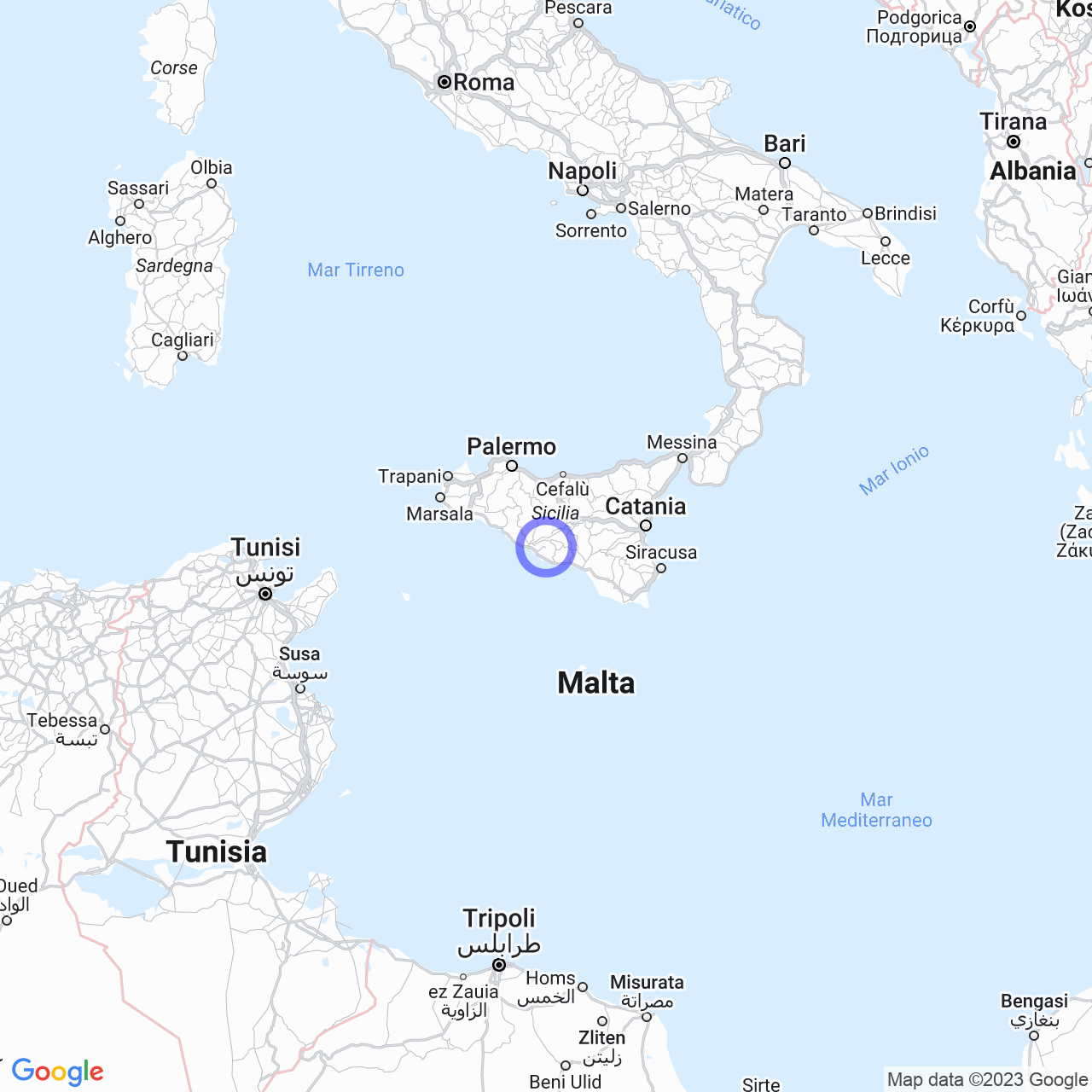Naro
Discovering Naro, a municipality in the province of Agrigento
Naro is a municipality in the province of Agrigento, in Sicily, with a population of about 7,000 inhabitants. Located at a maximum altitude of about 600 meters, the city extends over a vast valley with a panoramic view of the Mediterranean Sea. In addition to its breathtaking landscapes, Naro offers a millenary history and a vibrant culture. In this article, we will explore the physical geography, origins of the name, and history of Naro in more detail.
Physical geography

Territory
Naro is located on a panoramic position on the Mediterranean coast. The territory of Naro is crossed by the Naro River and contains two artificial basins: the San Giovanni Dam and the Furore Dam. The region is characterized by rolling hills that partly cover the view of the sea. The Val Paradiso is a vast valley that extends between the center of Naro and the Sicilian Channel.
Climate
The climate in Naro is Mediterranean, with hot and dry summers and mild and humid winters.
Origins of the Name
The name Naro has a long history that dates back to many different periods. It has been known by various ancient names, such as Camico, Indara or Inico in the Sicanian era, ''Ἀκράγας Ἰωνικόν'' (''Akràgas Ionicòn'' in Latin ''Akràgas Ionicum'') in the Greek era, and Carconiana during the Roman domination. The current name may derive from the Greek ναρόν (''naròn'', 'liquid, current') or the Phoenician ''nahar'' (flame) or the Arabic نهر (''nahar'', 'river').
History
Ancient Age
Naro has a very interesting ancient history. According to some hypotheses, the city was founded by giants, the first inhabitants of the island. This legend is partly supported by some archaeological findings, including giant skulls, bones, and cinnamon found in the foundations of the mother church. However, other theories suggest that the city was founded by the Sicani with the name of Indàra or Inico. There is also the theory that Naro was the colony of Gela, called ''Akràgas Ionicum'', founded in 680 BC, and a century before Akragas Doricum (the current Agrigento).
During the Roman period, the city became an important agricultural center that characterized its history in the following centuries. The territory of Naro also hosts the remains of early Christian settlements, including the catacombs and a Roman villa. San Gregorio, the bishop of Agrigento, was born in Naro.
Middle Age
During the Byzantine period, Naro experienced a period of development and prosperity. After the Arab conquest of 839, the city assumed strategic importance and became a hub for trade and agriculture. The city was expanded, fortified, and resisted the Norman conquest until 1086, when it fell to Count Roger after four months of siege.
Naro has a long history that dates back to many different periods, and its location near the coast and millennial history offer visitors a panoramic view of the region's history and culture.
